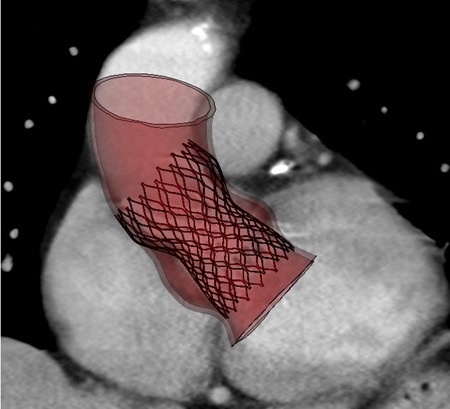
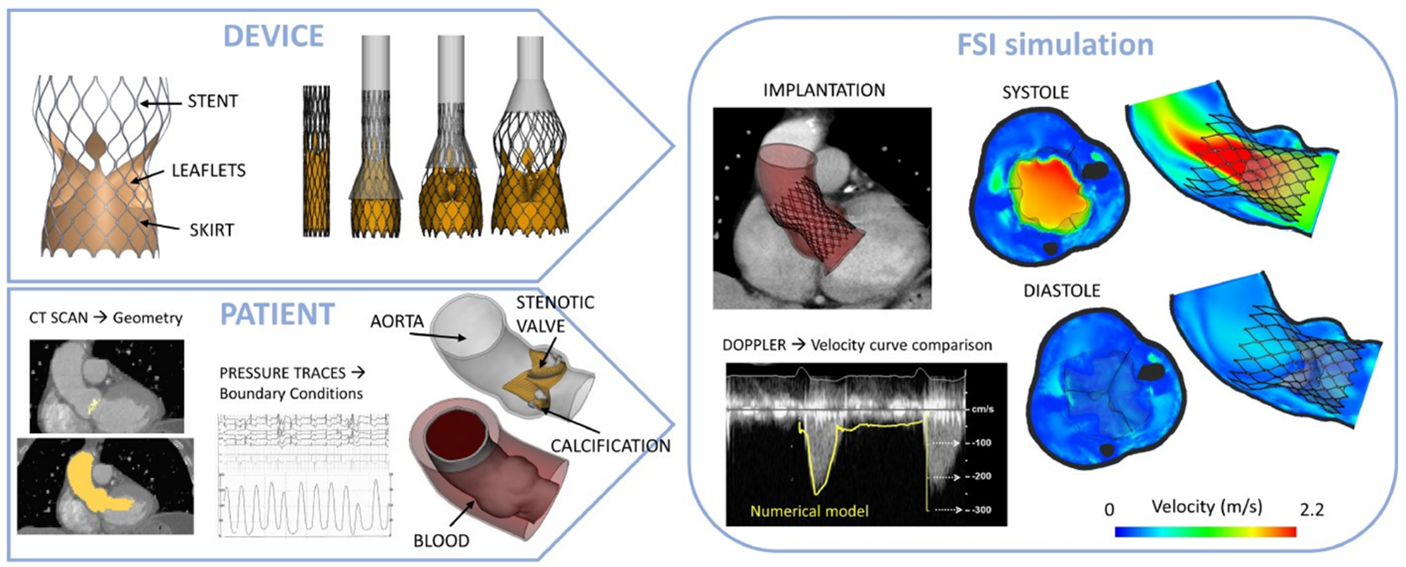
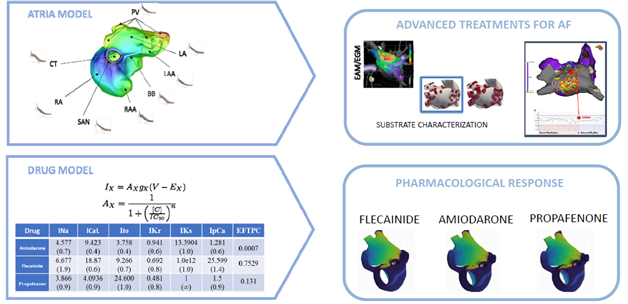
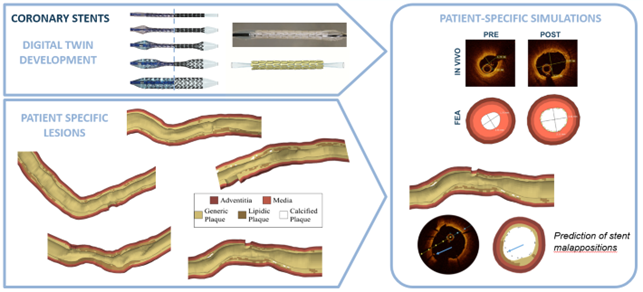
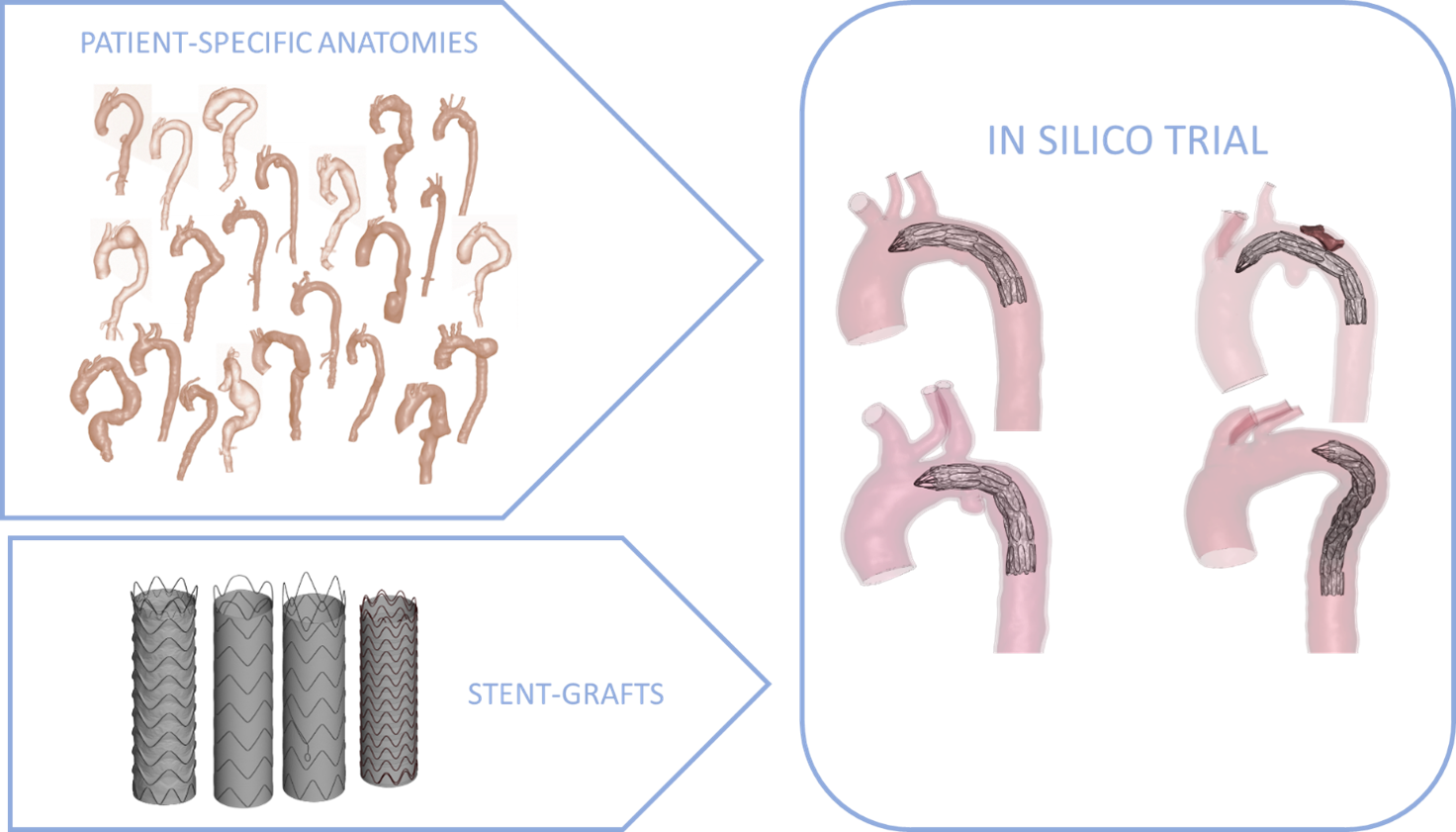
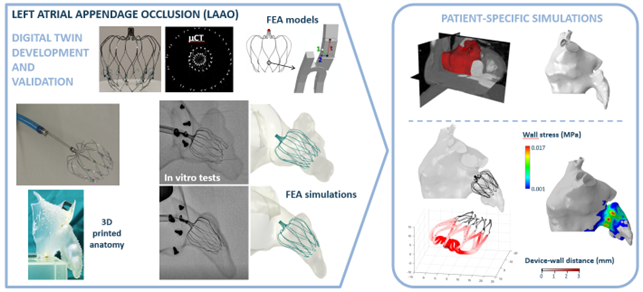
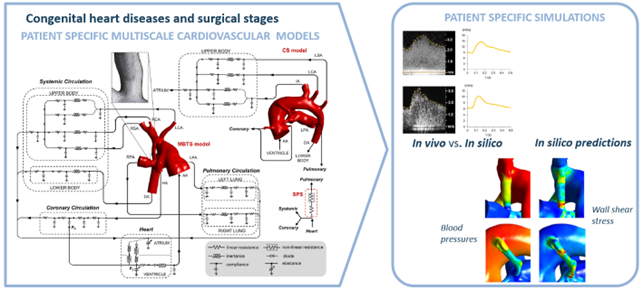
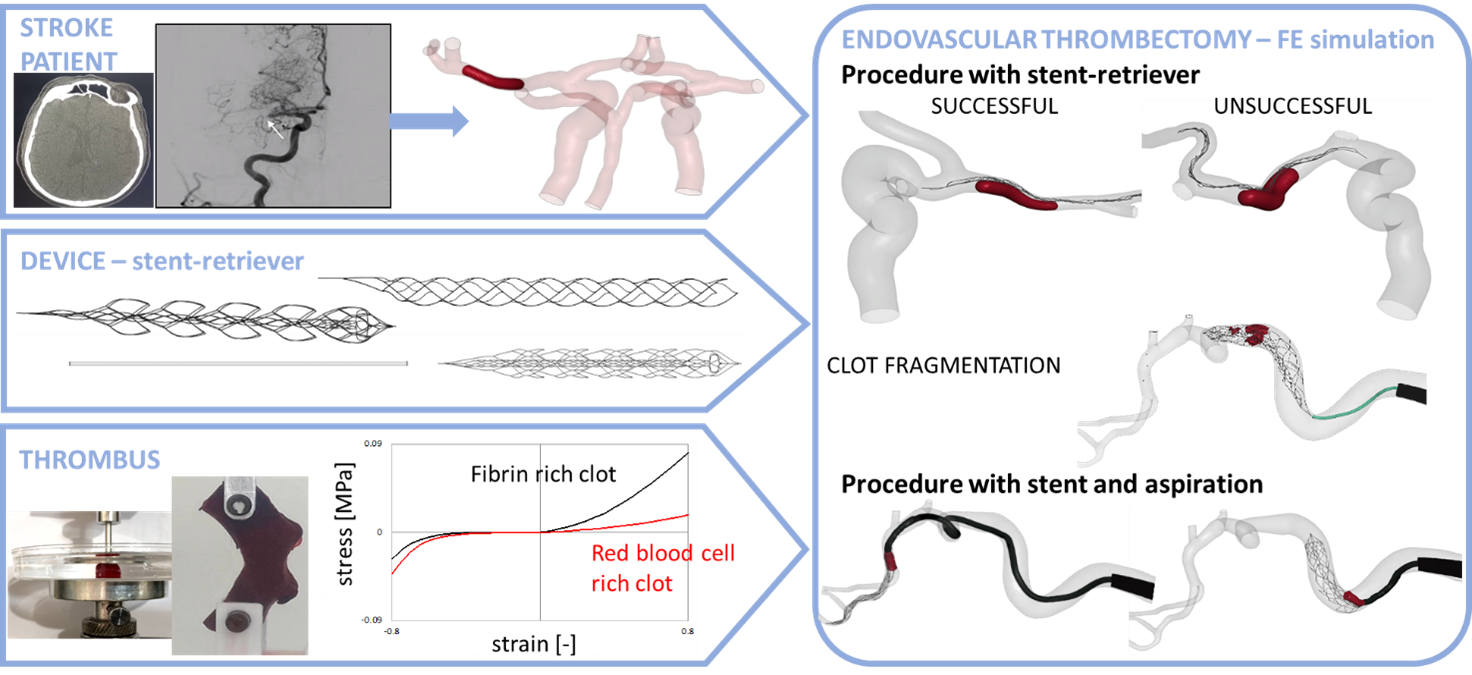
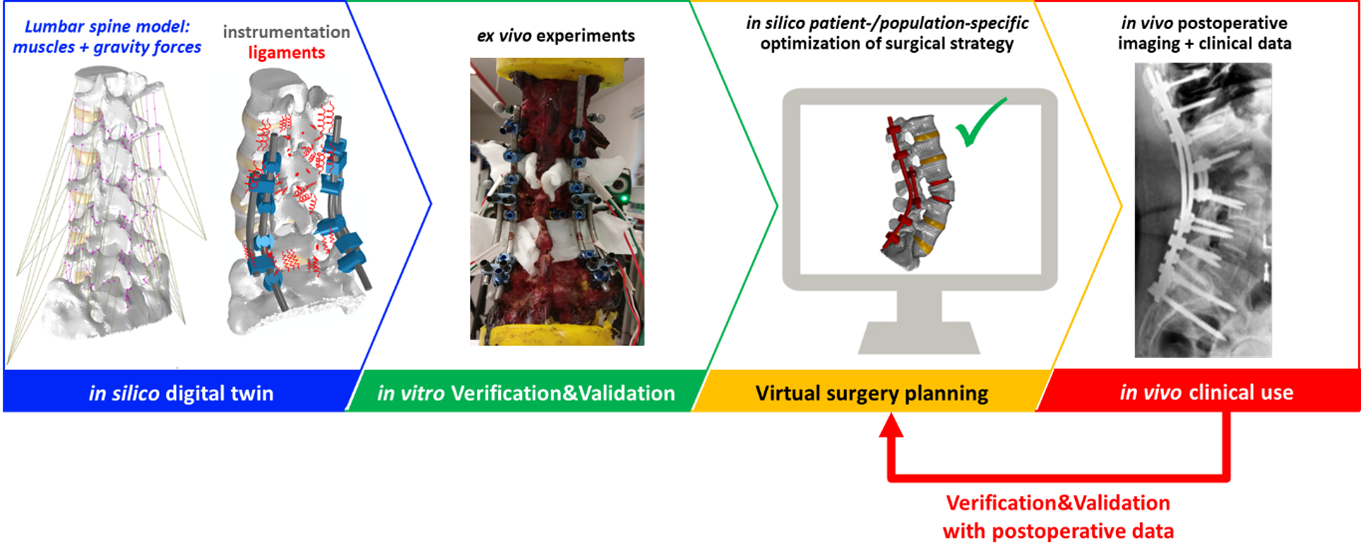
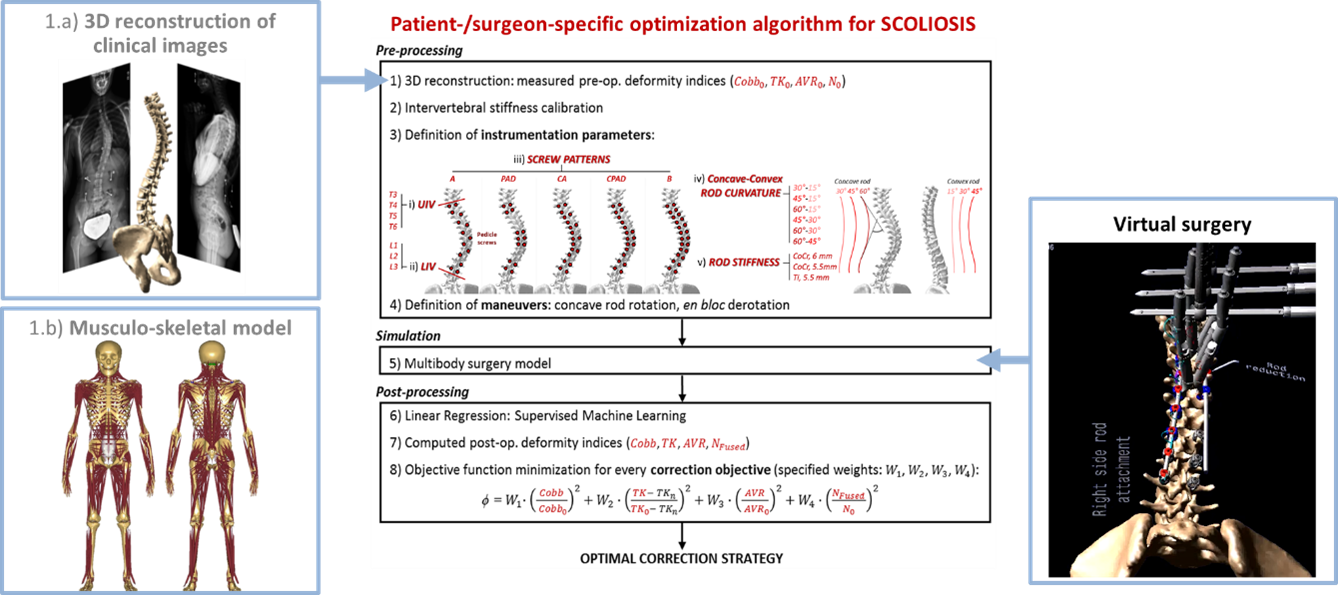
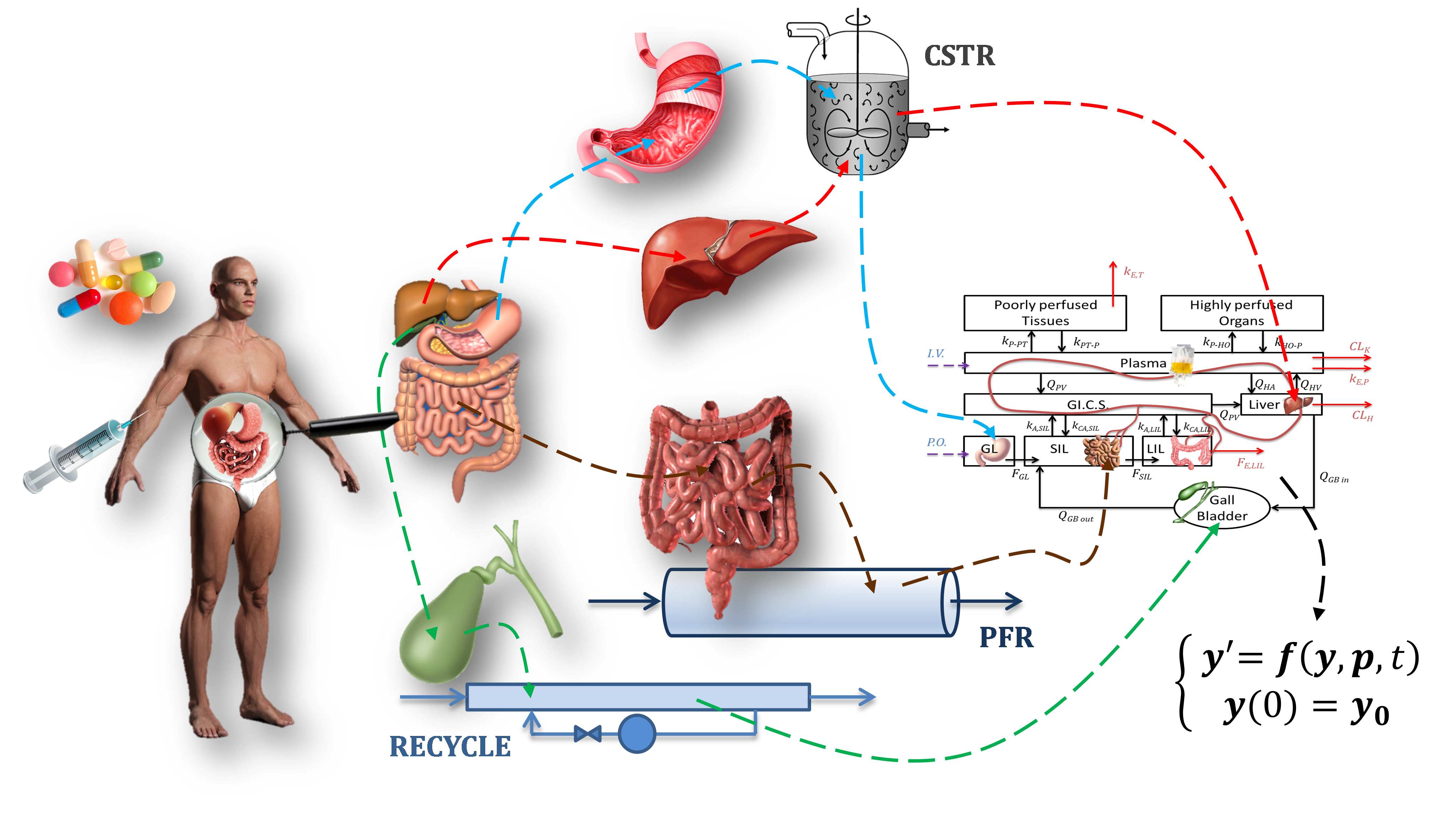
The laboratory has two main research applications:
Virtual populations, tissues, and organs are obtained from the elaboration of medical images or clinical datasets. Medical device models are characterized and built to be used in modelling codes. Pharmacokinetic and pharmacodynamic models allow the in-silico reproduction of a digital twin of a patient and an understanding of how drugs can be administered, distributed, metabolized, and excreted in the human body. Being based on both anatomy and physiology of bodily functions, these models can find the optimal dose, the best administration path, and the timing to reach specific targets. In addition, the models are individualized to the patient’s features such as sex, age, weight, height, and if available other indicators of organ efficiency.
The laboratory is memebr of the Virtual Physoliogical Human Institute.
Research activities are mainly focused on the fields of: